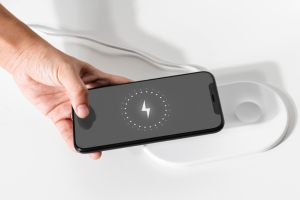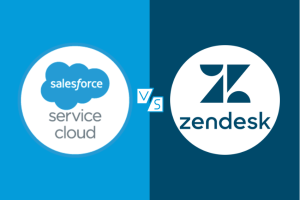The COVID-19 pandemic has reshaped industry trends in many ways, and packaging has no exemption. Many packaging companies rethink packaging design more than “must-haves,” including performance, convenience, and reasonable costs.
Because of the pandemic, these companies involve major requirements that include direct-to-consumer models, design with hygiene in mind, an excellent sustainability narrative, heightened consumer-safety concerns, and e-commerce design.
Having the innovation capabilities and right focus, the next “normal” for packaging has officially entered the scene.
What is Smart Packaging?
Before we dive into the main topic, let’s uncover what smart packaging exactly means.
Smart packaging refers to a packaging that comes with extended functions. There are two types to choose from: active packaging and intelligent packaging.
Active Packaging
An active packaging describes a packaging with content interaction. It improves the contents’ quality or shelf life during storage. Specific substances can be removed from their immediate surroundings or can be released into a medium.
Ethylene and oxygen absorbers, light filtering materials, moisture-regulating or antimicrobial surface coatings are used in active packaging. Any of these active components can either be added separately in inserts form or integrated into the packaging.
A beer in a plastic bottle is a typical example of this as it contains an oxygen absorber found in its screw cap. It extends the beer’s shelf life by about 3-6 months.
Intelligent Packaging
Intelligent packaging refers to a packaging that comes with an additional benefit and is essentially resulted from outside world communication. It also includes indicator and diagnostic functions to monitor the products’ condition while providing information on freshness, temperature, storage time, or tightness.
With integrated indicators for temperature, time, or freshness, both retailers and consumers can figure out if the product’s critical limit value is already exceeded. A color change in the packaging, for instance, can indicate a cold chain interruption, an unwanted salmonella proliferation, or a leaky packaging.
Intelligent packaging fulfills automation, marketing, information, or protection functions such as radio chips, loudspeakers, NFC, augmented reality, LEDs, and barcodes. For instance, intelligent packaging for a drug comes with tiny loudspeakers, LEDs, and built-in RFID chips that register the pills’ removal. Another packaging with NFC chips allows smartphone users to reorder the medication and read out the package insert.
How Smart Packaging Helps Brands During the Pandemic?
Since the emergence of the pandemic, it’s no surprise that the way people do business, shop, and live every day has completely changed. It is like everything has changed overnight. So, people end up rethinking how they function and interact in society.
The good news is that technology acted as a driving force to keep people connected on different levels. In terms of consumerism, customers and brands learn more about technology these days than before.
During these changing times, smart packaging became a tool to bridge the gap many consumers experience with regards to shopping. So, how can smart packaging help many brands during the pandemic?
Store-like Digital Experience Creation
Many would agree that in-store shopping is one of the most significant adjustments they have made due to heightened restrictions. The way customers interact with the products in a retail setting is also reshaped.
Things like bundling, inspiration, tactile touch, and branding are shopping’s fundamental aspects there were eliminated. Besides, these are opportunities that might be lost when customers do online shopping.
Fortunately, smart packing came into the scene and allowed every customer the opportunity to get a “walking down the aisle” experience and other offers and experiences that can be delivered to the customers directly.
Now is the best time for the brands to be innovative and utilize their creativity when it comes to creating digital experiences that most customers crave for.
Convenient Packaging Education for Customers
While an in-store experience involves a specific engagement level, the other side of the coin is the lack of education.
Let’s face it; mobile is one of the reasons behind consumer behavior and shopping refinement. In fact, most smartphone users turn to their gadgets to make purchase decisions while in stores.
With smart packaging, brands can educate their customers on their products in different ways they cannot do in stores. For instance, footwear brands may connect their product packaging to photos, customer testimonials, and reviews. They can also pair any other related products that could work well with the products customers have in hand.
Better Customer Understanding Through More Data
Data is another advantage of using smart packaging. It is critical as it can entirely dictate brand strategies. The more brands know, the better they can help their customers get what they need and want.
With smart packaging, many brands can know exactly where their products go and how they utilize them. Through a more in-depth understanding, brands can figure out where their products can create opportunities to market directly to the users on a regional and geographical level.
Customer’s Point of View About Smart Packaging
The innovations in the smart packaging field do not only open lots of opportunities to reach more customers and deeply understand their wants and needs but also provide convenience and peace of mind during the COVID-19 pandemic.
However, are consumers willing to use the packaging technologies?
In principle, consumers’ needs for critical information continues to increase. Then, the communicating packaging will be received by the consumers well. The consumers’ willingness to use smart packaging is high. However, they expect fast yet straightforward interaction. Smartphones are an excellent solution to this but without the need to install an application.
In Germany, one company developed functional inks that will enable printed batteries, sensors, and displays directly on the packaging in combination with other electrical components. It eliminates the whole IT infrastructure necessary for readout. This smart packaging type is less cheap, more straightforward, and less vulnerable.
Conclusion
The digital transformation already captures the packaging field, especially during these changing times. Using smart packaging must not be dedicated towards image cultivation and trends but focus on the benefits for the consumers and brands. Besides, added packaging innovation must be profitable and convenient to everyone.


